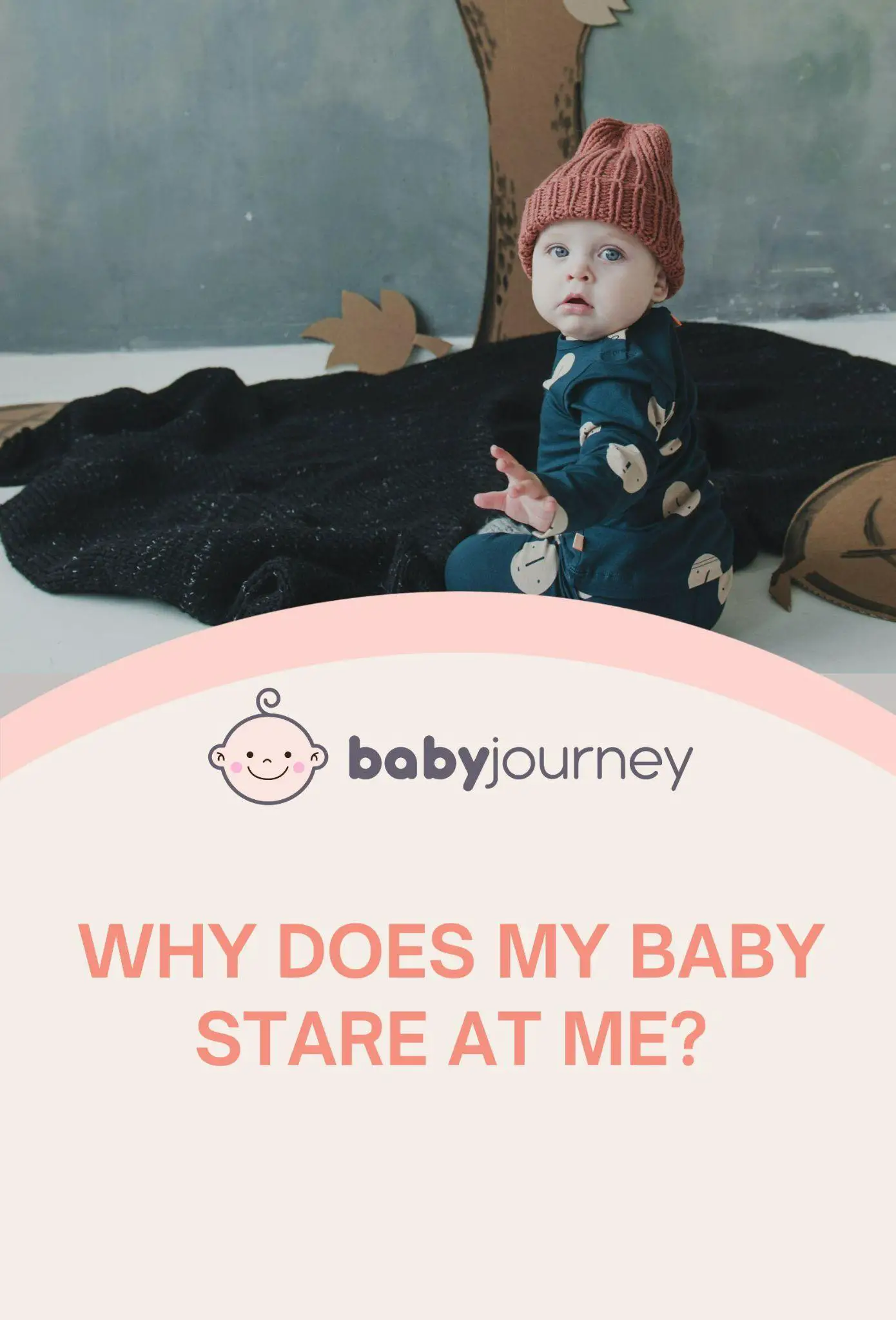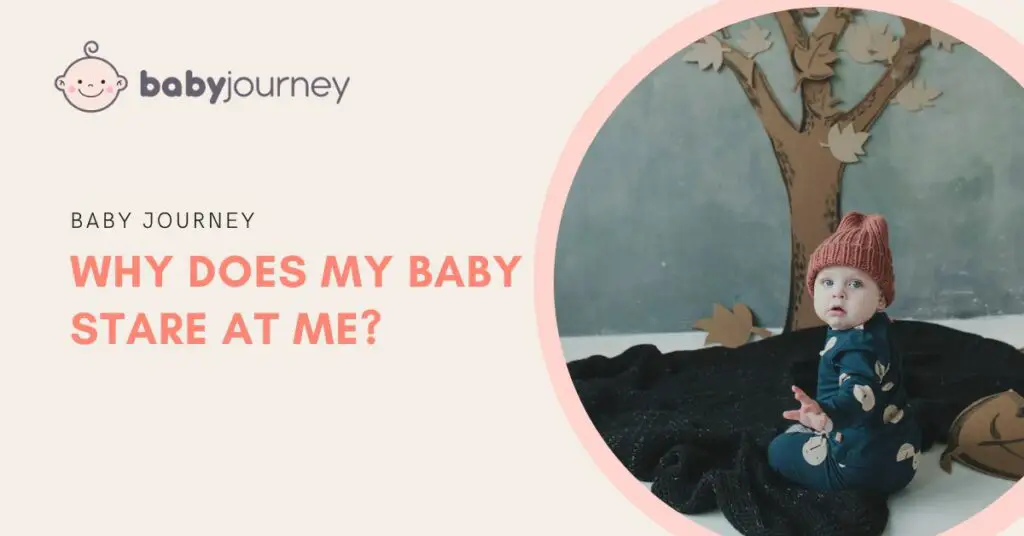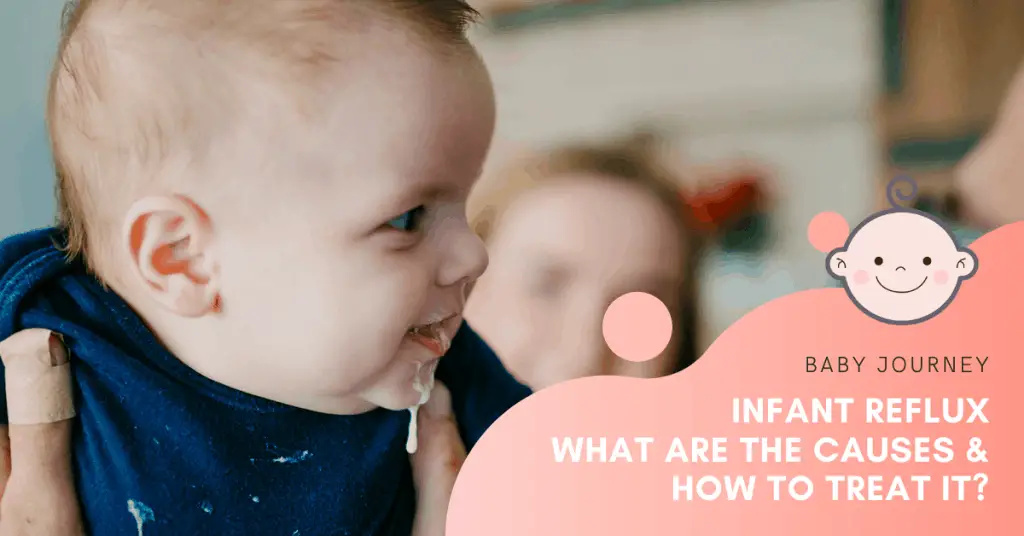Babies are a source of wonder and amazement for many parents’ primary caregivers. One common behavior that babies exhibit is staring intently at their parents or caregivers. This behavior can be both fascinating and confusing for new parents, leaving them wondering why their baby is staring at them.
There are several reasons why babies stare at their parents. One reason is that they are drawn to attractive people. According to a decades-old study, babies and young children spend more time glancing at faces that adults find attractive. Additionally, babies may stare at their parents because they are familiar with their faces and find comfort in looking at them.
Another reason why babies stare at their parents is that they are trying to communicate their needs, wants, and interests. When babies stare at someone, they are taking in all the visual information they can about that person or object. This process helps them learn about the world around them and understand the people in their lives.
Normal Behavior in Babies
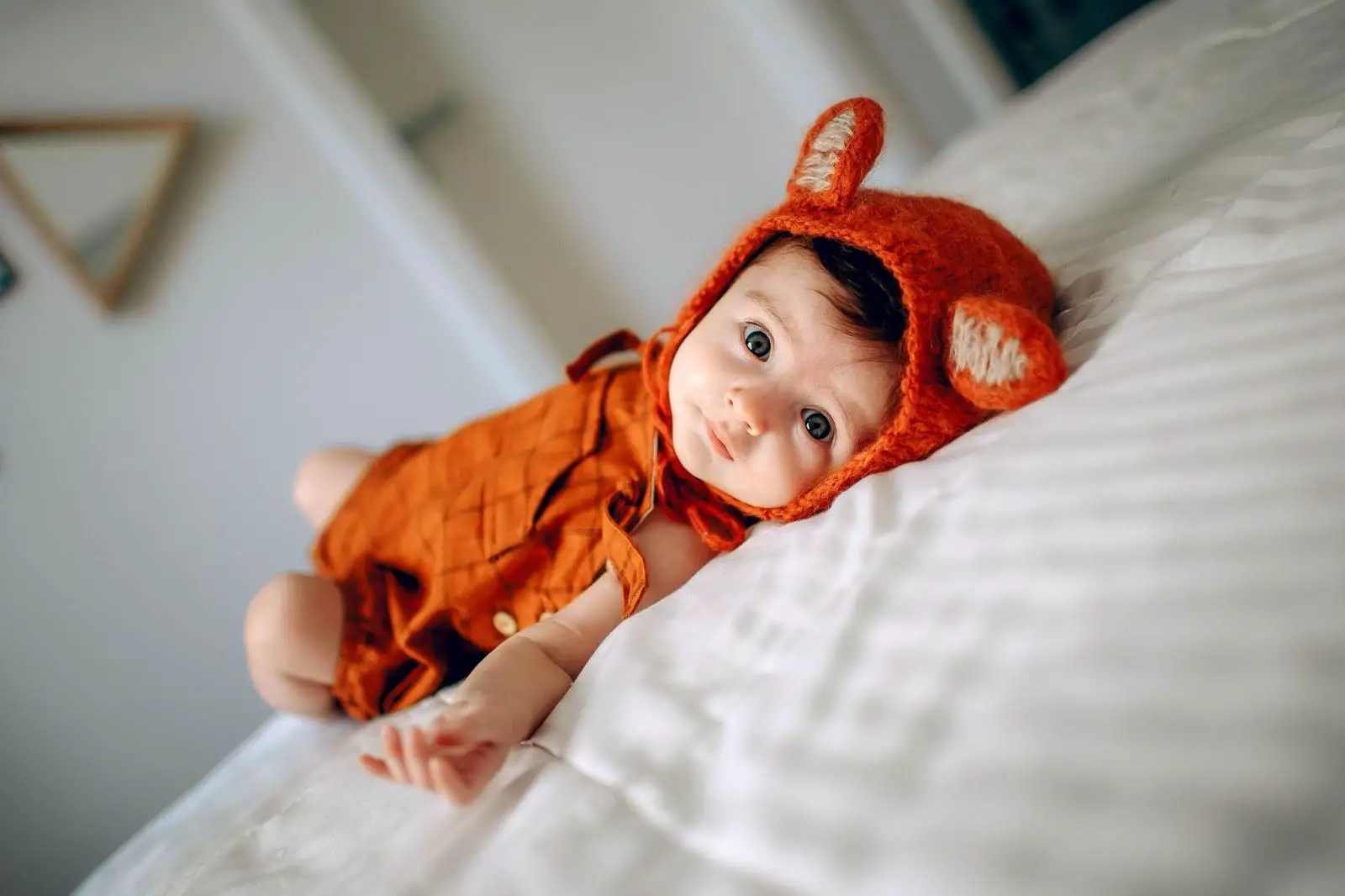
It’s not uncommon to see babies staring intently at people and objects around them. In fact, it’s completely normal behavior for infants. Here are some reasons why babies tend to stare:
- Visual Development: Newborns have limited visual acuity and cannot see objects beyond 8-10 inches away. As they grow and develop, they become more aware of their surroundings and start exploring their environment. Staring at people and objects helps them learn and understand the world around them.
- Social Interaction: Eye contact is an important part of social interaction, and babies start learning this skill from a very young age. Staring at people helps them learn how to make eye contact and engage with others.
- Curiosity: Babies are naturally curious and want to explore their environment. Staring at objects, people, and animals is one way they satisfy their curiosity.
- Brain Development: Staring at objects and people helps babies develop their visual and cognitive skills. It helps them learn how to focus their attention and develop their memory.
- Bonding: Staring at a caregiver’s face helps babies form a bond with them. It helps them recognize familiar faces and feel secure and comforted.
In summary, the staring behavior is a normal behavior in babies and serves many important developmental purposes. If you’re concerned about your baby’s staring habit, it’s always a good idea to talk to your pediatrician.
The Role of Vision
A baby’s vision is an essential factor in their development, and it plays a significant role in how they perceive the world around them. Understanding how a baby’s vision works can help parents understand why their baby stares at them and other objects.
Even though their eyesight is still far from developed, newborn babies can see shortly after birth. Because newborn babies are unable to adequately control their eye movements, parents may notice that their baby’s eyes cross or drift outward. In the vast majority of situations, this is merely a transient situation.
Visual acuity is the sharpness of vision, and it is the ability to see fine details. A newborn baby’s visual acuity is not fully developed, and they can only see objects that are within 8 to 10 inches from their face. They can only see high-contrast colors such as black and white or black and red.
Color vision is another aspect of a baby’s vision. At birth, babies can only see primary colors such as red, blue, and yellow. As their vision develops, they can see more colors, but it takes several months for them to see the full range of colors that most babies and adults can see.
Depth perception is the ability to perceive the distance between objects moving. Babies develop depth perception through experience, and it takes several months of age for them to develop this skill fully.
Bright colors and bright light can capture a baby’s attention because they are high contrast, visually stimulating and easily visible to them. However, it is important to note that just because a baby is staring at a bright object, it does not necessarily mean that they can see it clearly or understand what it is.
In conclusion, a baby’s vision is still developing and takes time to fully develop. Understanding how a baby’s vision works can help parents understand why their baby stares at them and other objects.
Learning and Cognitive Development
Babies go through major periods of growth within their first few months of life, and their learning and cognitive development play a significant role in this growth. As they learn about the world around them, they develop cognitive skills that help them make sense of their environment.
One of the key ways that most babies begin to learn is through movement. As they move their arms and legs, they begin to understand how their bodies work and how they can interact with the world. This movement also helps with brain development, as it strengthens the neural connections that are essential for learning and cognitive development.
As babies continue to develop, they reach important developmental milestones that are indicative of their cognitive growth. For example, they begin to recognize familiar faces and voices, and they start to understand cause and effect relationships. They also begin to develop language skills, which are critical for communication and socialization.
Parents and caregivers can support their baby’s learning and cognitive development by providing a safe and stimulating environment. This can include providing toys and other objects that encourage exploration and movement, as well as engaging in activities that promote socialization and language development.
It’s important to remember that every baby develops at their own pace, and that there is a wide range of what is considered “normal” in terms of developmental milestones. However, if parents have concerns about their baby’s development, they should speak with their pediatrician or a qualified healthcare professional for guidance and support.
Communication and Bonding

Babies stare at their caregivers for various reasons, and one of the most important reasons is communication. Babies use eye contact to communicate with their caregivers, and it is one of the first ways they learn to bond with them. Eye contact is also a critical part of language development and communication skills.
When a baby stares at their caregiver, they are trying to communicate with them. They may be trying to tell them that they are hungry, tired, or need a diaper change. Caregivers can use this opportunity to bond with their baby by responding to their needs and communicating with them.
Bonding with a baby is essential for their emotional and social development. When a caregiver responds promptly to a baby’s needs, they build a secure attachment, which is the foundation for emotional health and future expressions of love. Caregivers can bond with their baby by participating together in labor and delivery, feeding (breast or bottle), reading or singing to them, giving them a bath, and mirroring their movements.
As a caregiver, it is crucial to pay attention to a baby’s nonverbal cues, including eye contact, facial expressions, and body language. By doing so, caregivers can understand their baby’s needs and communicate with them effectively.
In conclusion, babies stare at their caregivers for various reasons, including communication and bonding. Caregivers can use this opportunity to bond with their baby by responding to their needs and communicating with them. Bonding with a baby is essential for their emotional and social development, and it starts with eye contact and communication.
Curiosity and Exploration

Babies are naturally curious beings, and they use their senses to explore the world around them. One of the ways they do this is by staring at people and objects. Babies are drawn to attractive people and may be staring at someone because they think they’re beautiful. However, this is not the only reason why babies stare.
Infants are fascinated by facial features, and they spend a lot of time looking at people’s faces. They may be trying to understand the expressions they see or trying to memorize the features they observe. Babies are very observant and learn about society by observing the people and objects around them. Therefore, they may stare at people to try and understand them better.
Babies are also attracted to patterns and contrasting colors. They may stare at clothing, accessories, or toys that have bold patterns or bright colors. Newborns can see immediately after birth, but their eyesight is far from fully developed. As a result, they primarily focus on things that are within eight inches of their face. This is why they may stare intently at toys or objects that are close to them.
In conclusion, babies stare at people and things out of curiosity and exploration. They are trying to make sense of the world around them, and staring is one of the ways they do this. They may be attracted to facial features, patterns, and contrasting colors. As a parent or caregiver, it’s important to encourage their curiosity and provide them with a safe environment to explore.
Emotional Response and Interaction

Babies have a natural inclination to stare at people’s faces. This behavior is attributed to their innate curiosity and desire to learn about the world around them. When a baby stares at their parents, it can be a sign of an emotional response and interaction.
One of the most common emotional responses that babies show is smiling. Babies start to smile at around six weeks of age, and it is one of the first social cues they learn to use. When a baby sees their parents, they may smile to show that they recognize them and feel happy to see them. This emotional response is crucial for building a strong bond between parent and child.
Facial expressions are another way that babies show emotional responses. They may furrow their brows when they are confused or upset, or they may open their eyes wide when they are excited. By watching their parent’s facial expressions, babies can learn to interpret and respond to different emotions.
Eye contact is also an essential part of emotional interaction between babies and parents. When a baby looks into their parent’s eyes, they are seeking a connection and reassurance. Parents can respond by making eye contact and talking to their baby, which can help to build trust and a sense of security.
In summary, emotional responses and interactions between babies and parents are a crucial part of building a strong bond. Smiling, facial expressions, and eye contact are all ways that babies show their emotions and seek connection with their parents. Parents can respond by engaging with their baby and providing reassurance and support.
When to Consult a Pediatrician
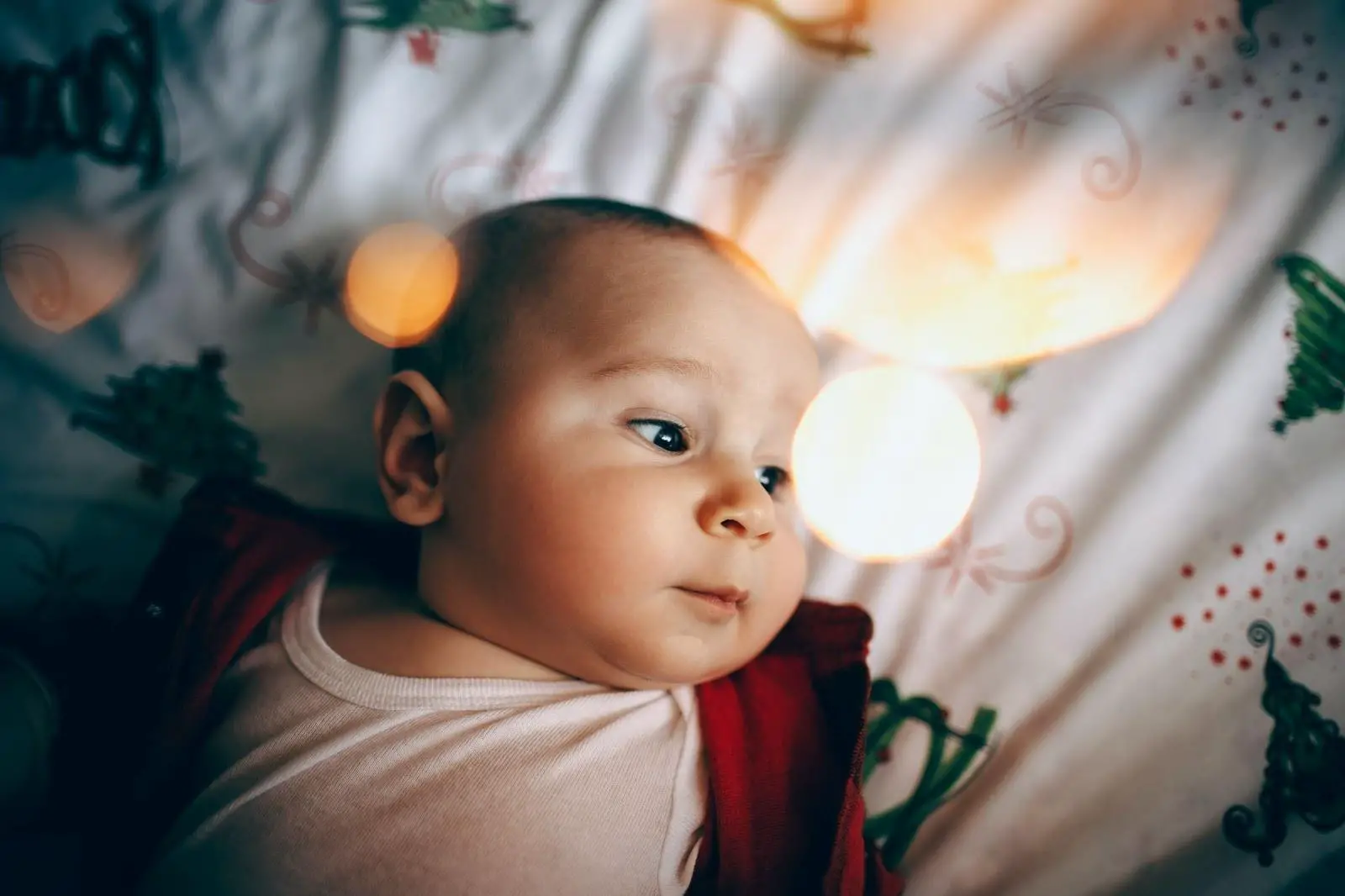
While it is normal for babies to stare at people and things, there are instances when it may be a cause for concern. If your baby is staring excessively or does not seem to respond to your voice or touch, it is important to consult a pediatrician.
Here are some situations where you may want to seek medical advice:
- Lack of eye contact: If your baby is not making eye contact by the time they are three months old, it may be a sign of an underlying condition such as autism. It is important to consult your pediatrician if you have concerns about your baby’s eye contact.
- Crossed or wandering eyes: If your baby’s eyes appear to be crossed or wander in different directions, it may be a sign of a condition called strabismus. Strabismus can cause vision problems and should be evaluated by a pediatrician.
- Unusual head movements: If your baby is tilting their head to one side or seems to have difficulty moving their head, it may be a sign of a condition called torticollis. Torticollis can cause neck pain and can lead to developmental delays if left untreated.
- Delayed milestones: If your baby is not meeting developmental milestones such as rolling over, sitting up, or crawling, it may be a sign of a developmental delay. A pediatrician can evaluate your baby’s development and provide guidance on interventions if necessary.
In general, if you have any concerns about your baby’s vision or development, it is always best to consult a pediatrician. They can provide guidance on what is normal and what may require further evaluation or intervention.
Conclusion
In summary, babies stare at people and things for various reasons. One reason is that they are drawn to attractive people. Studies have shown that newborns and young infants spend more time looking at appealing faces than unattractive ones. Another reason babies stare is that they are trying to understand the world around them. Babies are born with limited vision, and their eyesight is not fully developed. They need to look at things for a long time to understand what they are seeing.
Furthermore, babies may stare as a way of communicating. Babies cannot talk, so they use their eyes to communicate. They may stare at their parents to get their attention or to express their needs. Parents should pay attention to their baby’s eye movements and respond accordingly.
It is also important to note that babies may stare as a way of exploring their environment. Babies are naturally curious, and they want to learn about the world around them. Staring is one way they can gather information about their surroundings.
In conclusion, there are many reasons why babies stare at people and things. Parents should not be alarmed if their baby stares at them for long periods. Instead, they should use this as an opportunity to bond with their baby and understand their needs.
Frequently Asked Questions
Why does babies stare at their mothers?
Babies stare at their mothers because they are drawn to familiar faces. Babies are fascinated and mesmerized by faces and facial expressions. The baby stare, as it is often known, is their innate desire to long for their mother. This is because the mother is the primary caregiver and the baby feels safe and secure in her presence.
Why does babies stare at strangers?
Babies stare at strangers because they are curious and trying to make sense of their environment. Babies are interested in new faces and want to learn about the people around them. They may also be looking for reassurance from their caregiver that the stranger is safe.
Why does babies stare at me before falling asleep?
Babies may stare at their caregivers before falling asleep because they find comfort in their presence. Babies are not able to effectively control their eye movements, so they may stare at their caregiver as a way to soothe themselves before drifting off to sleep.
Do babies stare at appealing faces longer?
Yes, babies may stare at appealing faces longer. A decades-old experiment found that newborns and young infants spent more time looking at appealing faces than a baby staring at unattractive faces. However, it is important to note that beauty is subjective and what one person finds attractive may not be the same for another.
Why does babies stare at walls?
Babies may stare at walls because they are fascinated by patterns and shapes. Babies are drawn to contrast and may find patterns on walls or ceilings interesting to look at. They may also be exploring their environment and trying to make sense of what they see.
Why does babies stare into space?
Babies may stare into space because they are processing information or daydreaming. Babies have a lot of new experiences and stimuli to process, so they may take breaks to stare into space as a way to process what they have learned. They may also be daydreaming or lost in thought, which is a normal part of development.
